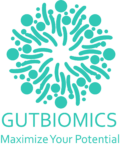Multi-omics 101
Om u te helpen het meeste uit dit rapport te halen, vindt u hier een kort 'Multi-omics 101'. Zodra u de basisbeginselen begrijpt, bent u er helemaal klaar voor om uw resultaten zo goed mogelijk in te zetten en toe te passen.
Definities
Chromosomen
In iedere cel van het lichaam zitten chromosomen. Chromosomen zijn een soort strengen. Ze bestaan uit een stof die we DNA noemen. In dit DNA zit een soort ‘code’ waarin alle erfelijke eigenschappen zijn vastgelegd.
Genen
Op de chromosomen zitten de genen. Een gen is een stukje DNA. Elk gen beschrijft de code van een kenmerk, die (mee)bepaalt hoe men er uit ziet, hoe het lichaam werkt of hoe je bent.
Genoom
Het genoom is de complete genetische samenstelling van een organisme, cel of virus.
Genotype
De som van alle genetische opmaak is het genotype = wat we kunnen zijn (ons potentieel). Genen hebben invloed, maar bepalen niet alles!
Epigenoom
Het epigenoom is het besturingssysteem van DNA en zet genen in cellen en weefsels aan en uit. Dit is de genregulatie en celspecialisatie. Zo is de genregulatie van een spiercel verschillend van een haarcel.
Epigenetica
Epigenetica bestudeert hoe je set aan genen tot uiting komt en welke invloed omgevingsfactoren daarop hebben. Deze omgevingsfactoren worden bepaald door levensstijl. Dit zijn dingen zoals voeding, stress, sporten, dag- en nachtritme, ziekte, medicatie, etc… De omgeving kan de werking van genen activeren of uitschakelen.
Fenotype
Het fenotype is het totaal van alle waarneembare eigenschappen (kenmerken) van een organisme. Het is het resultaat van de genetische aanleg (het genotype) van een individu en de invloed daarop van de omgevingsfactoren. Fenotype wordt uitgedrukt met de formule: fenotype = wat we zijn (gebaseerd op onze keuzes).

This network of metabolic pathways can vary from person to person.
Dit netwerk van metabole routes kan verschillen van persoon tot persoon.
To get a good picture of your network, a multi-omics analysis is performed so that we get a picture of your ‘inner selfie’ of metabolic pathways.
In such a multi-omic analysis, we look at various ‘biosamples’ (saliva, bowel movements, sweat, urine, etc…)
- your genetic makeup -> your potential
- your microbiome (i.e. your characteristic microorganisms on your skin, mouth, gastrointestinal system) -> representation of your environmental factors
- and metabolites (the substances that characterize your unique ‘metro route’) -> your operating system situation sketch
This gives us a good picture of what is going on biochemically in your body.
Why measure nutrients and follow them up further?
Nutrients are essential for good health. They are crucial components of many types of biochemical conversions in the body, such as enzyme reactions. A deficiency or excess of nutrients can lead to a reduced function of multiple (organ) systems and the human body as a whole. Before complaints and diseases manifest themselves, disturbances in the nutrient balance can already be detected. Measuring the nutritional status therefore has a important preventive role. Based on nutritional analyses, a nutritional or nutritional supplementation therapy can be applied, specified for the individual situation.
Nutrient measurements also contribute to the follow-up of a person or athlete and can be used to monitor the effects of a therapy, training or periodization.
Your unique metabolic pathway as a top athlete.
For athletes it is very important that the energy metabolism of the skeletal muscles during exercise is optimal. We mainly look at all aspects of the energy unit of your body. This is called ATP.
ATP can be compared to the Euro. ATP is, as it were, the means of payment for energy.
This process takes place in the mitochondria, the energy factories, of the cell.
In order for you to be able to exercise and perform optimally, it is important that these ‘energy factories’ function efficiently during training, competition and recovery. So the nutrients must be able to be converted into energy quickly. The ADME must be very efficient.
Optimize your unique metabolic pathway.
Good metabolic health contributes to well-being, peak performance, recovery and healthy aging. People who are physiologically in optimal condition can better cope with the daily challenges that the body experiences. We are talking about the optimization of ‘cellular respiration’ or the way in which your cells obtain chemical energy by breaking down food molecules such as carbohydrates, lipids and proteins. In addition, it is also important to have an idea of which factors are crucial at what time to optimally protect the body.
Making health improvement and top performance measurable.
Through bioinformatics, all data from the multi-omics analysis is mapped. For example, we can make a classification of 4 themes in which 3 phenotypes can be distinguished. These phenotypes are linked to biomarkers via measurement methods that make improvements in ADME and health measurable.
This way you can grow old healthy with small adjustments and maximize the resilience of your physiology.
- Food Type (Type 1, 2 or 3).
- Supplementation Type (Type 1, 2 or 3).
- Recovery Type (Type 1, 2 or 3).
- Cognitive Type (Type 1, 2 or 3).
- Wellbeing Type (Type 1,2 or 3).
